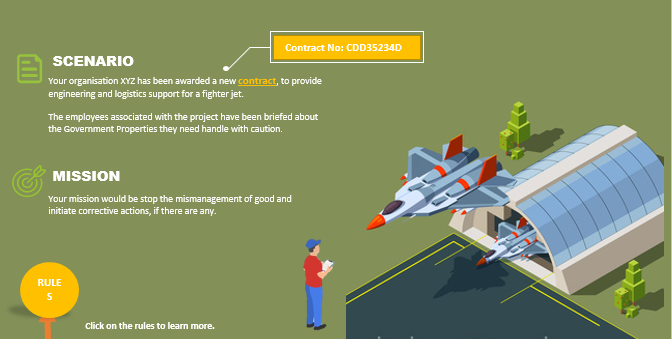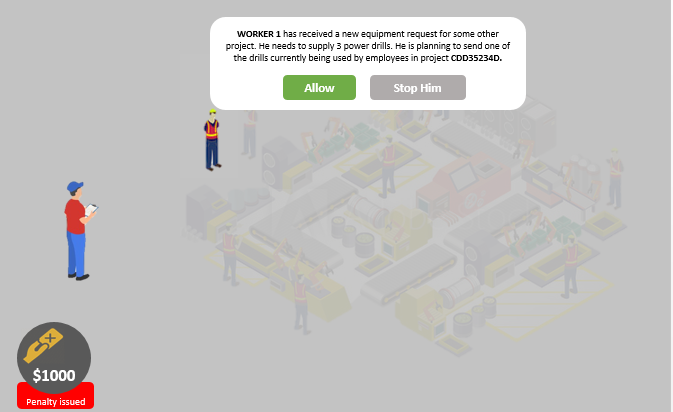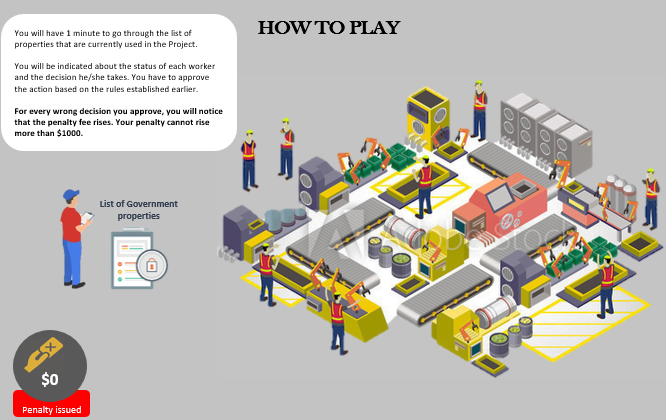Background:
My team received an RFP to create a highly engaging e-Learning course for a customer in the aviation industry. The customer wanted an unconventional and highly interactive learning solution where the audience would experience a ‘slice of real life,’ facing penalties for wrong decisions made on the shop floor. They were open to suggestions and looked to us for recommendations.
Target Audience:
The audience consisted of shop floor managers who were new to their roles. They had seldom taken e-Learning courses, as their training needs were usually met through classroom sessions.
Approach:
I initially proposed a structural gamification strategy. However, I also had to consider that the SMEs didn’t want to overwhelm the audience, who were being introduced to e-Learning for the first time. Additionally, the SMEs informed us that the source content would be updated based on changes in regulations and policies. Considering the target audience’s profile, their exposure to e-Learning, and the lack of finalized content, I proposed ‘content gamification’ instead of structural gamification.
Structural gamification involves gamifying the entire e-Learning course, including all modules and assessment questions. In an ideal situation, where the content had been finalized, this strategy would have taken the audience through an engaging journey, with meticulous planning in every aspect of design. However, due to constraints such as tight deadlines and delayed content confirmation, planning and executing a structural gamification strategy was impossible.
Content gamification involves gamifying only the content that directly contributes to the most critical objectives. For example, one specific module within the course can be gamified to reinforce the understanding of key messages or performance steps. Content gamification is effective when the scope of the e-Learning is vast and all objectives cannot be tied to a single narrative.
Execution:
I identified the content related to the objectives that users had to apply in their day-to-day tasks and gamified it. The course included gamification elements such as scenarios, missions, penalty points, and a timer to create a moderately realistic scenario. The storyboard for the other modules was designed with a modern HTML layout, infographics, and the content gamification module. I designed the game module, defining the points and penalty system—the audience’s actions were considered successful if the penalties accrued for their actions were minimal. The points and penalty system in the course closely mimicked the actual penalty system within the organization.



